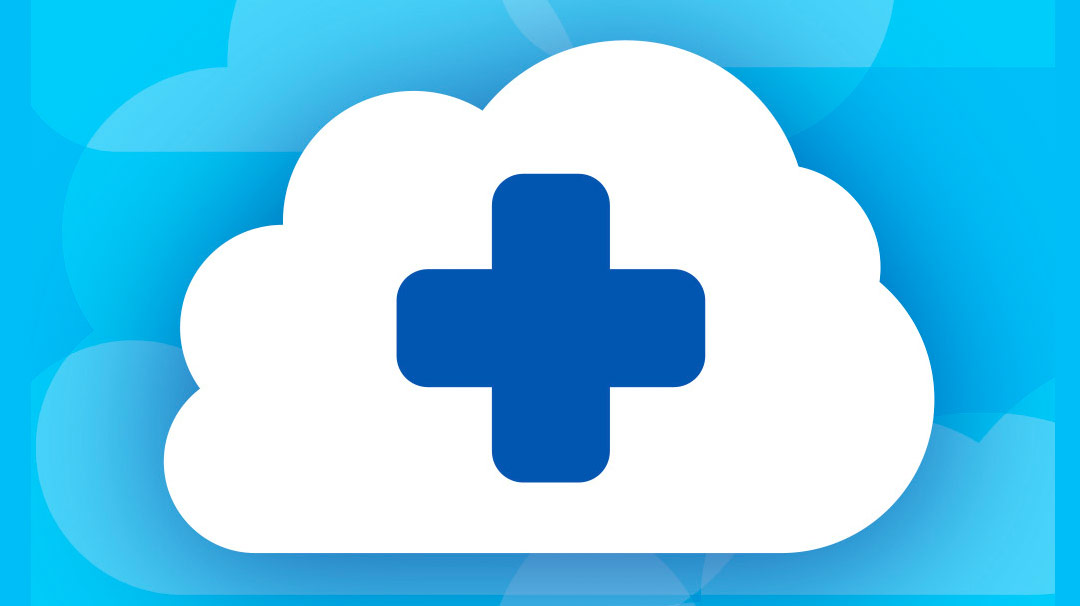HIPAA Compliant File Sharing: Secure, Simple Solutions for Healthcare Data
by Keegan Tremblay on May 21, 2025 12:06:01 PM

HIPAA compliant file sharing is integral to modern healthcare practices today as more organizations transition to include remote work. These file sharing solutions may stand alone, or be part of a more robust HIPAA compliant cloud storage suite. Regardless of the solution a healthcare organization chooses to implement, the requirement to protect patient data is clear.
HIPAA (Health Insurance Portability and Accountability Act) was established in 1996 to protect the sensitive health information for all patients. This means any individual or organization handling personal patient information must adhere to a strict set of rules when accessing, disclosing and sharing patient data.
Why does this matter? Beyond the obvious importance of keeping sensitive patient data confidential, non-compliance can have serious impacts on healthcare organizations.
Failure to comply with HIPAA can result in fines and sanctions against individuals and their organizations. From a business standpoint, HIPAA fines can range from $100 for minor violations up to $50,000. It’s also possible to face individual criminal charges for the most serious violations. Needless to say compliance is vital to the well being of patients and the organizations that serve them.
HIPAA compliant file sharing is relevant for all healthcare organizations, but especially important for those adopting telehealth, remote work and passing data between healthcare partners. In these environments, organizations often have patient data stored and shared across numerous locations every day, making potential data exposure more likely if your organization doesn't understand the points of risk and how to avoid them.
Before diving into specifics about what a HIPAA compliant file sharing solution may look like (we'll get there), let’s answer one of the most important questions: what information must you protect under HIPAA compliance?

Protected Health Information (PHI): What Needs to Be Protected?
Under HIPAA definitions, protected health information (PHI) refers to any information that can identify a patient in relation to their health conditions, the healthcare they’re undergoing, or how they pay for healthcare. You must protect this information when it’s stored or shared in any way - including in a digital database.
HIPAA outlines eighteen identifiers that make something PHI when used alongside a patient’s health information. Some of the most common examples of these are:
- Patient names
- Phone numbers
- Geographical data
- Medical record numbers
- Social Security numbers
- Email addresses
- Biometric identifiers
- Dates
Almost all healthcare organizations will deal with this information on a regular basis. Consider that organizations need personal health information to keep medical records, they require banking or insurance details for billing, and general contact information is a must in order to communicate with patients. Ultimately, it’s impossible to offer complete patient care without having many of these data points.
As a consequence, organizations must ensure this data remains protected while stored and in transit. If this still feels a bit confusing, then simply remember that if your organization's data can be linked to a patient in any way, it’s very likely PHI and governed through the lens of HIPAA.
What Makes a File-Sharing Solution HIPAA Compliant?
There are many file-sharing solutions out there, though most of them aren’t compliant with HIPAA. Don’t fall into the trap of using the same software or tools you may use for personal file-sharing. Instead, look for HIPAA compliant file sharing solutions that have the following features:
- Integrated HIPAA compliant cloud storage for patient files
- Encryption to protect patient data at rest and in transit
- Access controls to limit who can access files
- Audit logging
If your current solution doesn’t tick all four of these boxes, then you’re at risk of non-compliance and should seek an alternative option.
One other essential feature to consider is the presence of a Business Associate Agreement (BAA). This is a legally binding contract where the file-sharing provider agrees to comply with the latest HIPAA standards to safeguard PHI. It’s something that can be easy to overlook. However, even if your file-sharing solution ticks the boxes above, it’ll be non-compliant without a BAA in place. Ensure you work with your legal team to get a contract drawn up and keep your team compliant.

You may also want a file-sharing solution that aligns with SOC 2 compliance alongside HIPAA. While the two are separate entities, SOC 2 is a way of evaluating how well a company handles things like data security and privacy. SOC 2 can complement HIPAA by showcasing that your data-sharing systems adhere to higher security standards. When you're evaluating HIPAA compliant file sharing options, you can request a SOC 2 report directly from the file sharing software providers that you're evaluating. At Sync, we make a SOC 3 summary available for download right on our site, and our detailed SOC 2 summary is always available upon request.
Core Benefits of HIPAA Compliant File Sharing Solutions
Technically, it is possible to implement an in-house HIPAA compliant file sharing software system, though opting for an external solution saves significant time, resources and costly ongoing development and maintenance. Aside from the obvious benefit of avoiding HIPAA non-compliance, the right file sharing solutions can provide the following advantages:
- Improved Collaboration: Clinicians, lab technicians, and your strategic partners will collaborate better (and without hesitation) when using software that shares files securely. With a proper HIPAA compliant file sharing solution, everyone has quick access to the information they need to get their jobs done.
- Remote Accessibility: The presence of cloud storage for patient files enables you to quickly access your data from anywhere. This is especially critical if your organization has multiple sites, or adopts a remote work environment.
- Multi-Device Accessibility: HIPAA compliant file sharing ensures you can safely access the right data across multiple devices. You can view files on your desktop in the office, your tablet in therapy rooms, and even share directly from your mobile app while you're on the go.
- Scalability: The right file-sharing solution lets you scale workflows across teams and easily manage who has access to specific files and folders.
- Cost Effective: It’s significantly more affordable to use external file-sharing solutions than building, maintaining and evolving your own in-house HIPAA compliant file sharing system. An external solution can save a small fortune while maintaining compliance at all times.
- Better Disaster Recovery: Again, you can point to the cloud storage feature as a big value-add here. With it, you can back up PHI to the cloud, which makes it easy to recover any lost data from corrupted devices or broken hard drives.
- Competitive Advantage: All of these benefits lead to a smoother and more efficient workflow across your organization. Clinicians and other employees can work faster and collaborate more efficiently, which improves the overall quality of patient care. This translates to higher patient satisfaction rates, giving you an edge over competing organizations and encouraging repeat visits and recommendations.
Core Features to Look for in HIPAA Compliant File Sharing Tools
There are three main groups of features to look for when assessing potential solutions:
- Security Features
- Operational Features
- Collaboration Features
Each feature contains several sub-features that’ll determine if a HIPAA compliant file sharing tool is worth using.

Security Essentials
Your HIPAA file sharing tool must have layers of security that work together to protect your data. To this end, data encryption is a must. When your solution encrypts PHI data, it makes it unreadable and useless to anyone without the encryption keys. That's why it's important to look for a HIPAA file sharing solution that utilizes client-side encryption. Client-side encryption protects your data from unauthorized access when stored at rest in the cloud (only you can access your data, not the provider, or anyone else). This is how we handle encryption at Sync.com, because we're privacy obsessed, and we believe your data should only be seen by you.
Ideally, find a solution that encrypts your data both at rest (while sitting on the provider's servers) and in transit (while being sent between servers). Again, this is how we handle encryption at Sync.com, and to take it one step further, we apply two layers of encryption when data is in transit for extra protection (don't settle for less!).
Securely sending files between employees is always accomplished by sharing a link to the file being shared. But, you can't just share any link. You need the ability to apply additional security measures to maintain HIPAA compliance. That's why you should look for a HIPAA compliant file sharing solution that allows you to password protect the links you send. It's also extremely beneficial to be able to set link expiry dates so that the files you share can no longer be accessed after a set date. If link expiry doesn't work with your organization's workflows, having the ability to set one-time downloads for your files is also a great way to prevent bad actors from being able to get ahold of PHI from an old link. Lastly, setting view-only access to your files is an excellent way to maintain the integrity of a file. These file sharing security features are essential to ensuring HIPAA compliance.
Beyond encryption and link security features, role-based access controls are important for your team to have. Role-based access controls allow you to determine who can view and share PHI in your organization. As the name suggests, you can easily assign different access levels to individuals with different roles in your organization. For example, you may have an administrative access role, a managerial access role and a super-admin role with access to everything.
Lastly, two-factor authentication (2FA) is important, and having the ability to automatically enforce everyone in your organization to setup 2FA, is a capability you should look for when assessing solutions.
Operational Features
From an operational standpoint, the file-sharing system must include two key aspects:
- Audit trails
- Version control
Both aspects relate to viewing data history. Audit trails provide logs of what’s happened to the data in the file-sharing system over time, which is key in auditing your system's security. This allows you to see different versions of data files and whether they’ve been altered. As a result, you can track all of your files and see who has had access to the data and who may have altered it.
Collaboration Features
Keep an eye out for collaboration features that allow easy data sharing with patients or partners. It shouldn’t be hard to send or share data when you need to; the best HIPAA compliant file sharing software lets you do this at the click of a button while ensuring the highest security standards are met.
We’ve touched on this a few times, but having a robust cloud storage instance aids collaboration because it’s easier to share specific files and folders with individuals or organizations in different locations. For example, you can easily share data from the cloud to a lab that generates test results to a doctor’s office that provides patient consultations.
For an added bonus, look for a solution that allows you to edit, update and create common file types like spreadsheets, word documents, slideshows, and more. Having the ability to work with files directly in the file sharing system can speed up collaboration and workflows.
Common Mistakes to Avoid When Choosing a HIPAA Compliant File Sharing Solution
HIPAA compliance can be stressful for some administrators and organizations. Undoubtedly, there are some organizations using file-sharing solutions that are not HIPAA compliant right now (yikes!), but we’re going to help you avoid making the same errors. Here are a few of the biggest mistakes to avoid:
- Assuming any “secure” tool is HIPAA compliant: Tools claim to be secure, so you may assume they align with HIPAA compliance and will be fine to use. That’s not the case! In fact, many file-sharing tools out there are not HIPAA compliant. Don’t make this mistake; always check with the provider to be 100% sure they comply (and when you're ready, get that BAA drafted!).
- Neglecting internal processes and staff training: Don’t forget to train your staff and ensure everyone understands the internal processes involved in HIPAA compliant file sharing. If people don’t know how to use the system or are confused about certain elements, then you increase the risk of experiencing problems and data breaches. Pick a tool that’s easy to use and stay up to date on any new features and upgrades that come available.
- Overlooking BAAs: The presence of a BAA is mandatory when seeking HIPAA compliant file sharing options. Don’t overlook this, as you could end up using a system that doesn’t actually adhere to the HIPAA privacy rule.

How to Implement HIPAA Compliant File Sharing in Your Organization
You might assume that implementing HIPAA compliant file sharing is a simple case of picking a software provider and signing up. In reality, adding a few more steps to this process will help you find the ideal solution that meets the needs of your organization. Here's a few steps to help your search:
- Assess your current risks: Begin with a HIPAA Risk Assessment to determine where the main vulnerabilities and risks lie in your current system. This helps you pinpoint areas to strengthen, which naturally helps with your next steps.
- Choose the right vendor: A good vendor will provide solutions to your biggest HIPAA risks. Think back to the section about the “core features to look for” so you can find the ideal file-sharing vendor.
- Train staff on HIPAA compliance: The best file-sharing system in the world can still be used incorrectly. HIPAA violations can easily stem from individual negligence, which means you must train your staff to understand HIPAA compliance and know how to use your new system.
- Set up monitoring and audits: Choose a file-sharing system that lets you monitor different file versions and audit your practices. This helps you detect and avoid risky activities while also making sure that data never goes missing.
- Ensure the vendor performs regular software updates: Never pick a HIPAA file-sharing vendor that doesn't update their software regularly. Updates help to patch any security breaches and adapt to future problems that might not have been present when you first implemented the software. It’s the only way to continually remain compliant in an evolving digital environment.

The Future of HIPAA Compliant File Sharing: Trends to Watch
To follow up on importance of software updates, let's touch on some of the future trends of HIPAA compliant file sharing. There's a growing trend toward using secure cloud collaboration tools, which aligns with the healthcare world switching to a more remote workflow. Rather than one large organization handling patients and PHI in one location, more and more companies work together to share services, which increases the need for HIPAA compliant cloud tools.
As digital environments evolve, cyberattacks will become more and more sophisticated, making them harder to prevent with old in-house systems. There will always be new ways for criminals to try and obtain PHI, placing a strong emphasis on the need for systems that always update and secure against new risks.
Conclusion: Get Started with HIPAA Compliant File Sharing
In summary, it’s important to get HIPAA compliant file sharing right. Non-compliance can negatively impact both patients, and your organization through fines and massive reputational damage. You need to follow the correct HIPAA protocols when storing and sharing data, which begins with using a HIPAA compliant vendor.
It’s never too late to start; audit your current tools and processes today to run a HIPAA Risk Assessment and see where you stand. If you have any questions, feel free to contact us! We're always happy to help.
- September 2025 (3)
- August 2025 (1)
- July 2025 (3)
- June 2025 (1)
- May 2025 (1)
- April 2025 (1)
- February 2025 (2)
- January 2025 (1)
- December 2024 (1)
- November 2024 (2)
- October 2024 (5)
- September 2024 (6)
- August 2024 (3)
- July 2024 (6)
- June 2024 (4)
- May 2024 (4)
- April 2024 (7)
- March 2024 (4)
- February 2024 (5)
- January 2024 (5)
- December 2023 (1)
- November 2023 (3)
- October 2023 (3)
- September 2023 (2)
- August 2023 (5)
- July 2023 (2)
- June 2023 (4)
- May 2023 (2)
- March 2023 (2)
- February 2023 (1)
- January 2023 (3)
- December 2022 (1)
- November 2022 (3)
- October 2022 (2)
- August 2022 (3)
- July 2022 (1)
- June 2022 (1)
- May 2022 (2)
- April 2022 (1)
- March 2022 (2)
- January 2022 (4)
- December 2021 (2)
- October 2021 (3)
- September 2021 (3)
- August 2021 (1)
- July 2021 (5)
- June 2021 (4)
- May 2021 (3)
- April 2021 (4)
- March 2021 (5)
- February 2021 (2)
- January 2021 (5)
- December 2020 (1)
- November 2020 (2)
- September 2020 (1)
- August 2020 (1)
- July 2020 (1)
- May 2020 (1)
- April 2020 (1)
- March 2020 (3)
- February 2020 (1)
- November 2019 (1)
- October 2019 (1)
- August 2019 (1)
- May 2019 (1)
- April 2019 (1)
- February 2019 (1)
- January 2019 (2)
- December 2018 (1)
- October 2018 (2)
- September 2018 (4)
- June 2018 (1)
- May 2018 (1)
- March 2018 (1)
- January 2018 (2)
- December 2017 (2)
- November 2017 (2)
- September 2017 (1)
- August 2017 (2)
- May 2017 (2)
- April 2017 (1)
- January 2017 (2)
- July 2016 (3)
- June 2016 (3)
- February 2016 (1)
- November 2015 (1)
- September 2015 (1)
- August 2015 (4)
- May 2015 (4)
- January 2015 (2)
- October 2014 (1)
- September 2014 (1)
- August 2014 (2)
- July 2014 (5)
- June 2014 (2)
- March 2014 (1)
- December 2013 (1)
- October 2013 (1)
- September 2013 (1)
- July 2013 (4)
- June 2013 (2)
- April 2013 (1)
- February 2013 (1)
- January 2013 (1)
Subscribe by email
You May Also Like
These Related Articles

Cloud Storage for Healthcare Providers: Everything you Need to Know

Cloud Storage In Healthcare: 7 Benefits for Your Practice
